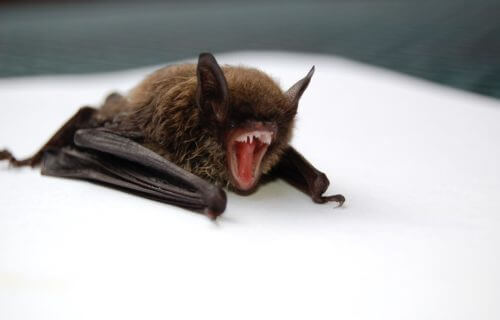DENMARK — Contrary to popular belief, bats are not blind, but they do rely on sound to understand what’s going on in their environment. Bats listen for a variety of sounds, including different vocal frequencies coming from other bats. In a new study from Denmark, researchers have identified how they make a range of sounds—and it’s the same technique used by death metal growlers and throat singers in Siberia and Mongolia.
“We identified for the first time what physical structures within the larynx oscillate to make their different vocalizations. For example, bats can make low frequency calls, using their so called ‘false vocal folds’ – like human death metal singers do,” says Coen Elemans, a professor of biology at the University of Southern Denmark and study coauthor, in a statement.
False vocal folds are structures that look like vocal cords although they are not often used for human speech and song. Only a few cultures around the world such as the Tuva people in Siberia and Mongolia have learned to use false vocal cords. Like bats, these people move their vocal folds down so they oscillate together with the other vocal folds.
“This makes the vocal folds heavy and therefore they vibrate at very low frequencies,” adds Jonas Håkansson, a postdoc at the University of Southern Denmark and first author of the study.
Above: The high-speed video shows vocal membranes and false vocal folds vibrating at different frequencies. (Credit: University of Southern Denmark)
Bats aren’t using their false vocal cords to jam to a death metal concert. Instead, they produce growling sounds when flying in and out of a place the bat is using for shelter. “Some seem aggressive, some may be an expression of annoyance, and some may have a very different function. We don’t know yet”, says Lasse Jakobsen, a biologist and bat expert from the University of Southern Denmark and study coauthor. While biologists are nowhere near capable of understanding what bats are saying, they do know their growling sounds fall at a frequency of 1 to 5 kHz.
The team did not focus solely on the deep growls of bats, they also studied communication at higher frequencies. These frequencies were used when hunting for insects. Bats use a method called echolocation when hunting for food in places of complete darkness. Echolocation involves sending out short and high frequency calls and then listening for echoes reflected from nearby objects. The bat can then figure out the shape, size, and texture of objects in milliseconds.
“To show their vibrations we needed to film at extremely high rates, up to 250,000 frames per second,” says Jonas Håkansson. “We see many adaptations in the larynx, that we think are responsible for the bat’s ability to make very high frequency calls very fast, so that they can catch insects while flying.”
The normal vocal range for a bat can get up to seven octaves. Humans tend to have a range of 3-4 octaves and only a handful—think superstars Mariah Carey, Axl Rose, and Prince—can reach 4-5 octaves. It’s possible they might be using different structures in their larynx, just like bats.
The study is published in the journal PLoS Biology.
